wolfdragon
Senior Member
  
Joined: April 2011
Posts: 287
|
Post by wolfdragon on Mar 8, 2012 8:47:49 GMT -5
What material is that?
|
|
mator
Junior Member
 
Joined: January 2012
Posts: 76
|
Post by mator on Mar 8, 2012 12:28:28 GMT -5
copper
|
|
mator
Junior Member
 
Joined: January 2012
Posts: 76
|
Post by mator on Mar 8, 2012 13:54:52 GMT -5
I hope that you understand that it is joke on 8-th march)))
It is study sample in our univercity. I just have never seen such chambers with unfinished cooling jacket. Plus this topic is true now. This cooling edges are made by electro-chemical way.
|
|
|
|
Post by Johansson on Mar 23, 2012 1:12:04 GMT -5
A short update on the project, I have found a pair of large steel pipes for the NOX and methanol tanks so as soon as I have finished my annual motorcycle overhaul I will cut the steel pipes to lenght and start adding the different connections to them.
My plan right now is to fit this engine to a gocart chassis once it is thoroughly tested and race it on next years Speed Weekend, they have a short track that would be perfect for this engine since I probably cannot fit enough fuel on the cart to last an entire 2000m. =)
|
|
|
|
Post by Johansson on Mar 25, 2012 11:45:08 GMT -5
Finally some serious work done on the rocket engine again, my sand blaster was in bad need of an overhaul which prevented me from doing anything on the project but after making new internals for the pistol grip I could use it again. 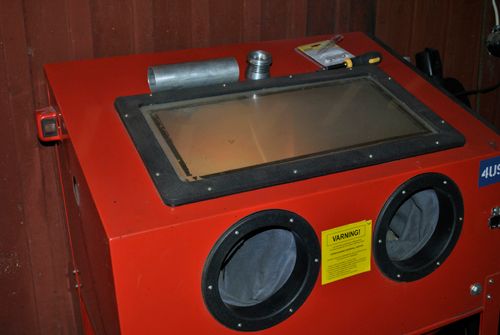 I sand blasted the engine and welded the nozzle and combustion chamber together. 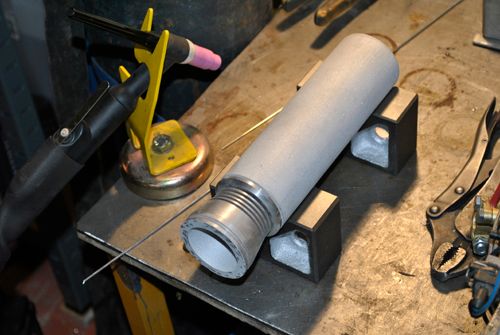 Then I coated the engine internally with cheramics and left it over night to dry. 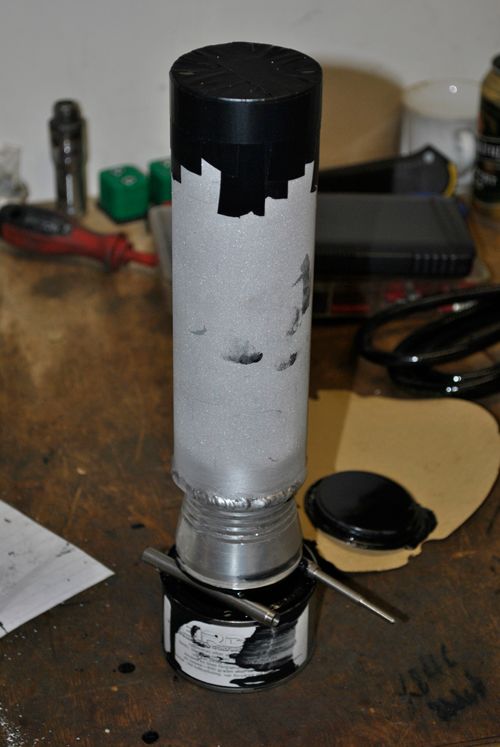 The next day (today) I heated up the oven to cure the cheramic coating, and during the couple of hours it took I built the NOX and methanol tanks. 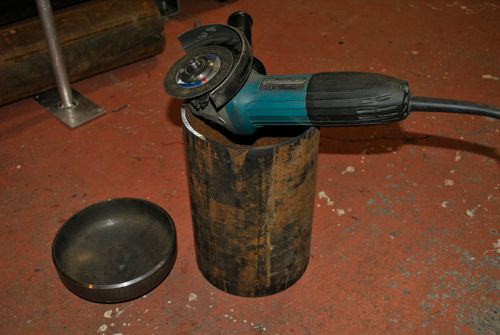 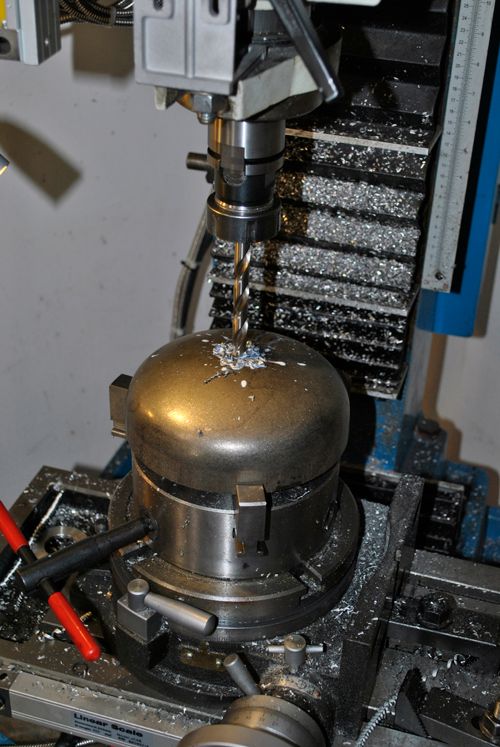 A hydraulic coupling at each end of the tanks and a fill plug on the methanol tank was fitted, the tanks will be standing so the upper fitting is for nitrogen pressurisation and the bottom one is, for obvious reasons, the feeding line to the engine.  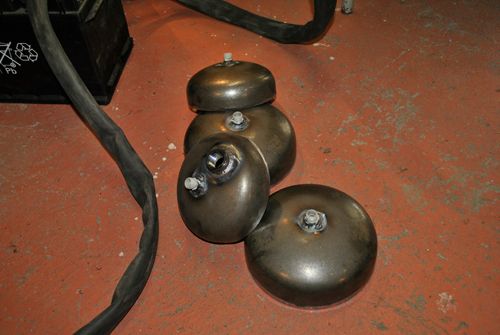 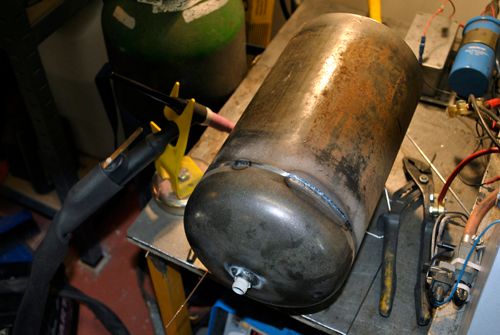 I welded the tank in two passes, first a root pass... 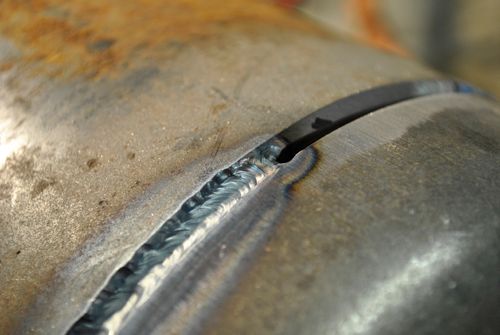 ...and then a second pass to fill the v-groove. 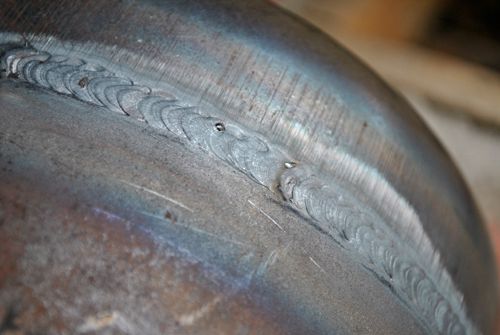 Here the two tanks are welded and cooling off on the workshop floor, next to them is the newly cured rocket engine core also letting off some heat after the injector plate was welded to it. 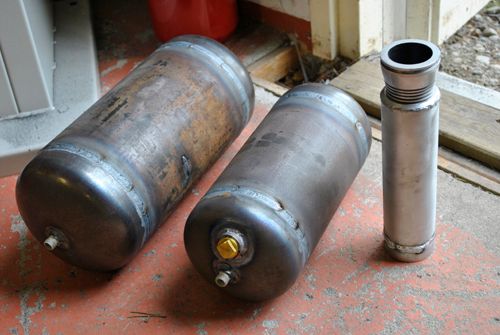 Here is a pic of the injector plate welding, the nitrous oxide flowing through it will keep it cool so no coating was applied to it. 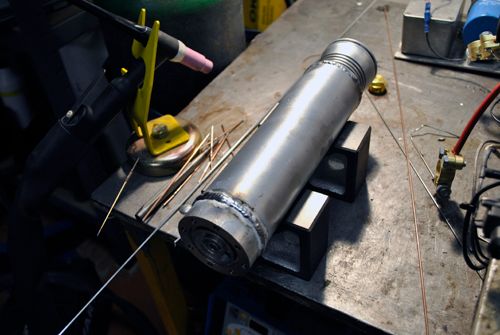 And tadaaa! The rocket engine is finished except for some paint! 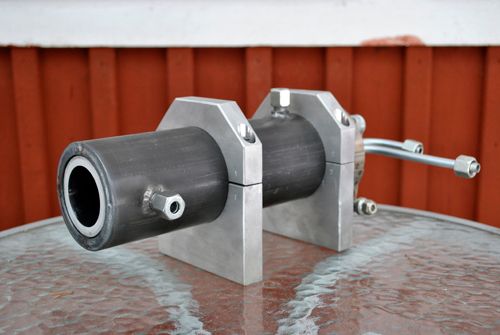 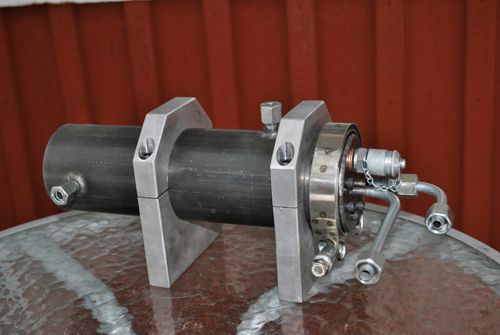 Here the engine is standing next to my AMT Pegasus turbine, they are almost identical in size but the rocket engine is calculated to have 6.5 times as much thrust.  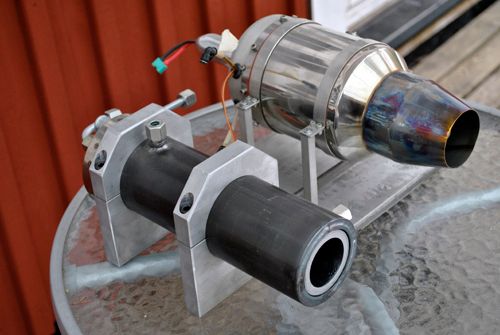 Cheers! |
|
|
|
Post by racket on Mar 25, 2012 16:01:52 GMT -5
Hi Anders
You've been busy :-)
Nice strong tanks .
Cheers
John
|
|
|
|
Post by Johansson on Mar 26, 2012 0:18:06 GMT -5
They should easily hold the pressure, but before we fill them the entire system will be pressure tested with water to make sure that they can take the pressure and that there isn´t any leaks anywhere. The NOX tank is aprox. 6 litres so it should hold enough oxidizer for 20 seconds of running, I will do an attempt to calculate the theoretical distance the gocart will travel during that time and what the final speed will be. Thrust is 100kg and total weight including driver should be no more than 200kg, my guess is closer to 150kg. Ground friction will be low since it will have runners instead of wheels, no fairings but quite small frontal area since it is a gocart. Should make for an interesting ride.  |
|
|
|
Post by racket on Mar 26, 2012 4:18:56 GMT -5
Hi Anders
LOL......it will be an interesting ride :-)
100 kgs thrust on a 200 kg vehicle = 0.5 G acceleration ..............16.1 ft/sec2
20 seconds at 16.1 ( neglecting things like friction , wind resistance etc ) will see you travelling at 322 ft/sec - 220 mph .
Distance ~1000 metres . if no drag.
...................yep, an interesting ride even with wind resistance etc etc :-)
Cheers
John
|
|
mator
Junior Member
 
Joined: January 2012
Posts: 76
|
Post by mator on Mar 26, 2012 9:23:44 GMT -5
Did you calculate tanks on a strength?
And it is looking great!!!! As I see, we can see the first start wery soon!
I dont understand, why do you need a turbin, if you work on rocket "monster" that is million times powerfully?
|
|
|
|
Post by Johansson on Mar 26, 2012 12:36:36 GMT -5
Did you calculate tanks on a strength? And it is looking great!!!! As I see, we can see the first start wery soon! I dont understand, why do you need a turbin, if you work on rocket "monster" that is million times powerfully? No calculation done, but a fair bit of estimation and I will soon do some testimation to confirm it. ;D Turbines are more challenging than rockets and pulsejets, they sound sweeter and can be used for "practical" purposes as well unlike a bipropellant rocket engine. |
|
|
|
Post by Johansson on Mar 27, 2012 14:30:51 GMT -5
My old jetcart frame has moved in, after removing a pound or two of bird droppings it looks just like I remember it.  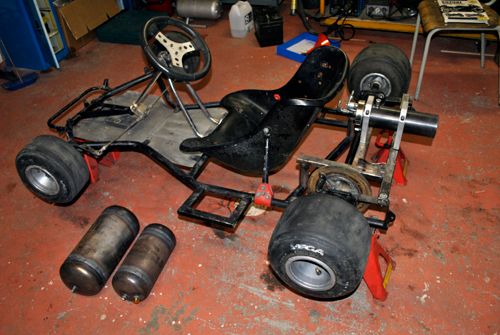 I will most likely stretch the frame a bit to get it more stable at speed, a standard gocart frame is very nervous and with 1000N pushing me along an 800m track that doesen´t exactly help. Steel runners will be fitted instead of the wheels to reduce the ground resistance.  The cooling system will be a "closed loop" with cooling fluid, a pump and a radiator instead of the regenerative cooling I first had in mind. The 6 litre per minute of methanol is probably not enough to carry away the heat absorbed by the aluminum thrust chamber but a high flow of water should reduce the wall heat at a much higher rate. Cheers! |
|
|
|
Post by britishrocket on Mar 30, 2012 4:01:13 GMT -5
Hello Johansson,
Excellent progress, really very, very impressive. I look at your work and it spurs me on to continue with my project.
Very nice welding indeed. There is nothing prettier than a good TIG bead. Well actually there are lots of things prettier but you know what I mean!
At first I thought the tanks were made from old vehicle air tanks, but then I saw your post about them being made from large sections of pipe. Where did you get the hemispherical ends from?
I use pulse TIG for getting close to edges and I find it very useful, it pinpoints the arc and prevents things running away and ending up in a melted mess, especially near an edge. Have you tried this?
Like the idea for the cooling system. You can mix methanol with water to increase the cooling capacity. It enhances cooling by a large margin whilst only reducing performance by a small amount. I have written about this on my blog, in the post "Fuel Concerns". So you may be able to use regen cooling. It should be able to deal with the heat load, especially as you have the ceramic coating. I will be watching your engine tests very closely, thank you for all your updates.
Best Wishes,
British Reaction Research.
|
|
mator
Junior Member
 
Joined: January 2012
Posts: 76
|
Post by mator on Mar 30, 2012 10:42:39 GMT -5
It is very interesting to see, how it will be started up))))
|
|
|
|
Post by britishrocket on Mar 31, 2012 11:45:03 GMT -5
Hi Johansson,
What sort of ignition system will you be using? I can't see a port on your injector for a spark plug or a torch igniter.
Are you going to be using something inserted in the nozzle?
Be interesting to find out!
Best Wishes,
British Reaction Research.
|
|
|
|
Post by Johansson on Mar 31, 2012 13:44:12 GMT -5
Thanks, I say the same about your project. It is very encouraging to see others building the same type of engine and I learn a lot from reading about your and others progress. My aluminum welding needs some practice but I am pretty satisfied with my mild and stainless welding skills, I have spent countless hours welding 1mm sheet metal so welding thick rocket engine casings is pure joy!  I bought the end caps at the local plumbing store, they were quite expensive but luckily my working partner happened to know the seller from the golf course so I got a large discount on them. I have never found the need of using the pulse setting, I suffer a bit from not having a foot pedal on my tig but I get by anyway. Good to hear that you think the cooling will be enough with the water/methanol mix and water jacket cooling, I think I will stay away from the regenerative cooling even if it might work since the closed loop water cooling feels more bullet proof. With it I can make sure no air is trapped inside the cooling jacket and the methanol won´t have to fill up the cooling jacket before it reaches the injector. To ignite the engine I will use a lenght of loudspeaker wire inserted through the nozzle all the way to the injector plate, coupled to the ignition module it should produce a nice arc between the two copper wires. There is no room for a spark plug on the injector plate so I will have to do it this way, I am just hoping that the ejected wire won´t damage the coating in the nozzle. Cheers! /Anders |
|